Stop Fighting the Leaves: A Pro’s Guide to Winning Fall Cleanup
For more than two decades, I’ve been the guy in charge of keeping massive properties—from public parks to sprawling private grounds—from getting buried every autumn. And let me tell you, it took a few years of struggle, broken rakes, and feeling utterly defeated before I cracked the code. Autumn leaves aren’t a war you have to wage. They’re just a predictable part of nature’s rhythm, and you can absolutely work with it instead of against it.
In this article
- The 15-Minute Quick Win for When You’re Overwhelmed
- First, Understand the ‘Why’ Behind the Drop
- The Pro-Level Game Plan: Herding and Hauling
- Choosing Your Weapon: Rake, Blower, or Mower?
- Not All Leaves Are Created Equal
- Turn Your Leaves into Black Gold
- When to Call for Backup
- Safety First, Always
- Inspiration:
Most folks see a yard blanketed in leaves and immediately feel overwhelmed. They grab a rake and just start flailing, fighting a losing battle on a dozen different fronts. The pro approach? It’s all about efficiency, working smart, and seeing those leaves as a resource, not just a mess. Honestly, there are no secret magic tricks here. It’s just a solid, repeatable system that saves your back, your time, and even makes your soil healthier. So, I’m going to walk you through the exact method I use, so you can handle leaf season like you’ve been doing it for years.
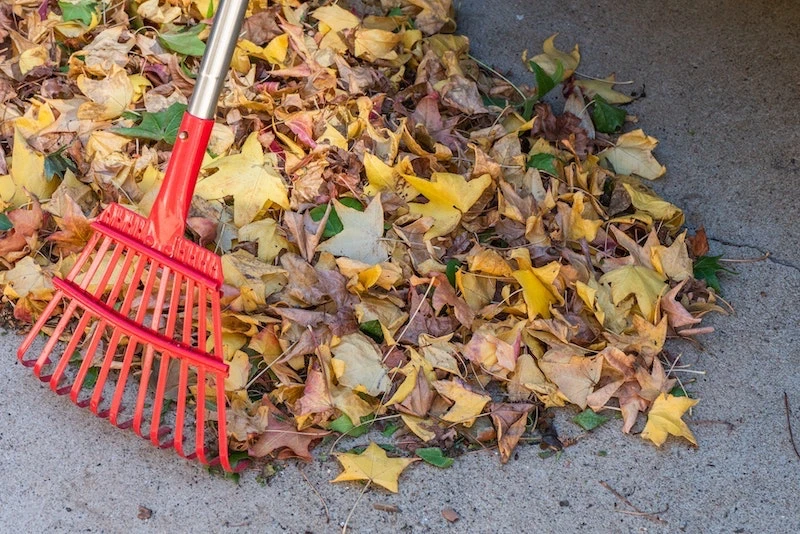
The 15-Minute Quick Win for When You’re Overwhelmed
Feeling buried and don’t have time for the whole yard? I get it. Just do this today: Spend 15 minutes clearing the leaves off your driveway, walkways, and a three-foot perimeter around your house’s foundation. Use a rake or blower. That’s it. You’ll be shocked at how this one small action makes the entire property look 50% tidier, and it also takes care of major slipping hazards and discourages pests from moving in. A quick win can give you the momentum you need for the bigger job.
First, Understand the ‘Why’ Behind the Drop
Before you even think about touching a tool, it helps to know what’s actually going on. This isn’t random; trees are smart. They’re methodically shedding their leaves to conserve energy and survive the winter. This process is called abscission, a fancy word for the tree creating a special layer of cells that neatly cuts each leaf off. It’s triggered by less daylight and cooler temperatures.
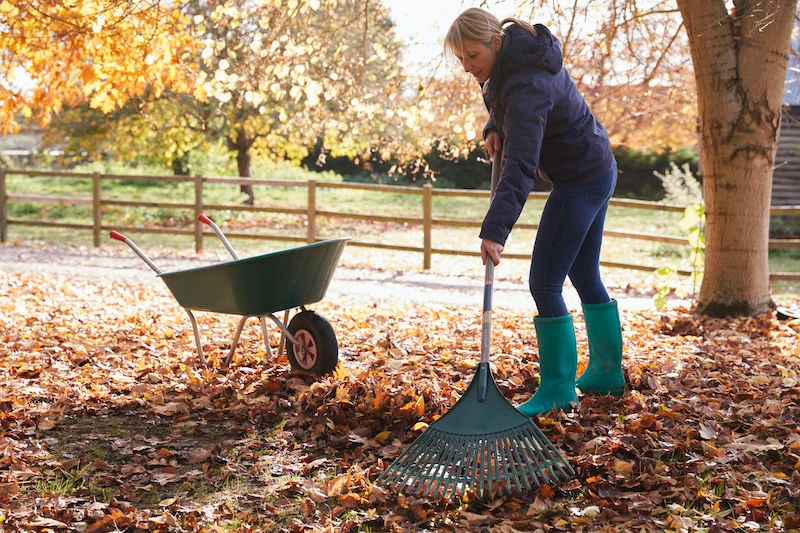
So, why does this matter to you? Because it means the leaves fall gradually. A big oak tree can have a couple hundred thousand leaves, and they don’t all come down in one weekend. This is where patience becomes your superpower. I’ve learned to wait until most of the work is done for me. My rule of thumb is this: when you look up at the tree and see more sky through the branches than you see leaves, it’s go-time. That’s probably around the 75-80% mark. Raking every single day is just a recipe for burnout. Wait for the big drop, and you can plan for one or two major cleanups instead of a dozen frustrating mini-sessions.
The Pro-Level Game Plan: Herding and Hauling
On a big property, we can’t afford to waste a single movement. We use a systematic workflow that you can easily scale down for your own yard. For a typical half-acre yard, this whole process shouldn’t take you more than 90 minutes to two hours once you get the hang of it.
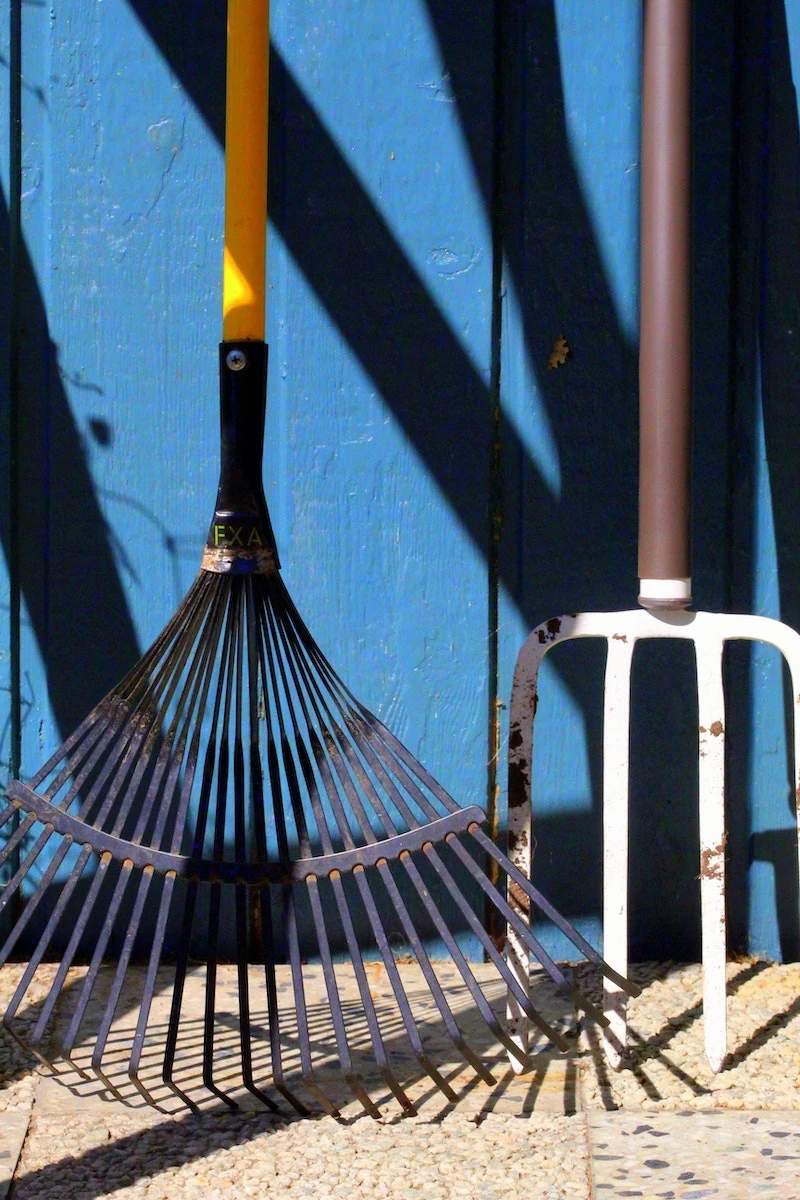
The Zone and Herd Method
Whatever you do, don’t start raking from the middle of the lawn. You’ll just be fighting yourself. First, divide your yard into logical zones—front yard, back yard, side yard, etc. Then, within each zone, you work from the outside in.
Start at the perimeter. Get the leaves away from your house’s foundation, out from under the shrubs, and along the fence lines. Use your rake or a blower on a low setting to gently “herd” all those leaves from the tricky spots into the open, central area of the lawn. This step is crucial. Once all the leaves are in one big, loose area, collecting them is a breeze because you’re no longer dodging bushes or scraping along a fence.
Mastering the Tarp
Bagging leaves one little plastic claw-full at a time is for amateurs. The pros use tarps. Get yourself a good, heavy-duty polyethylene tarp, something at least 12 by 16 feet. You can find them at any hardware store for about $20-$30. Heads up: avoid those paper-thin, cheap blue tarps. I’ve seen them rip to shreds the first time they snag on a branch.
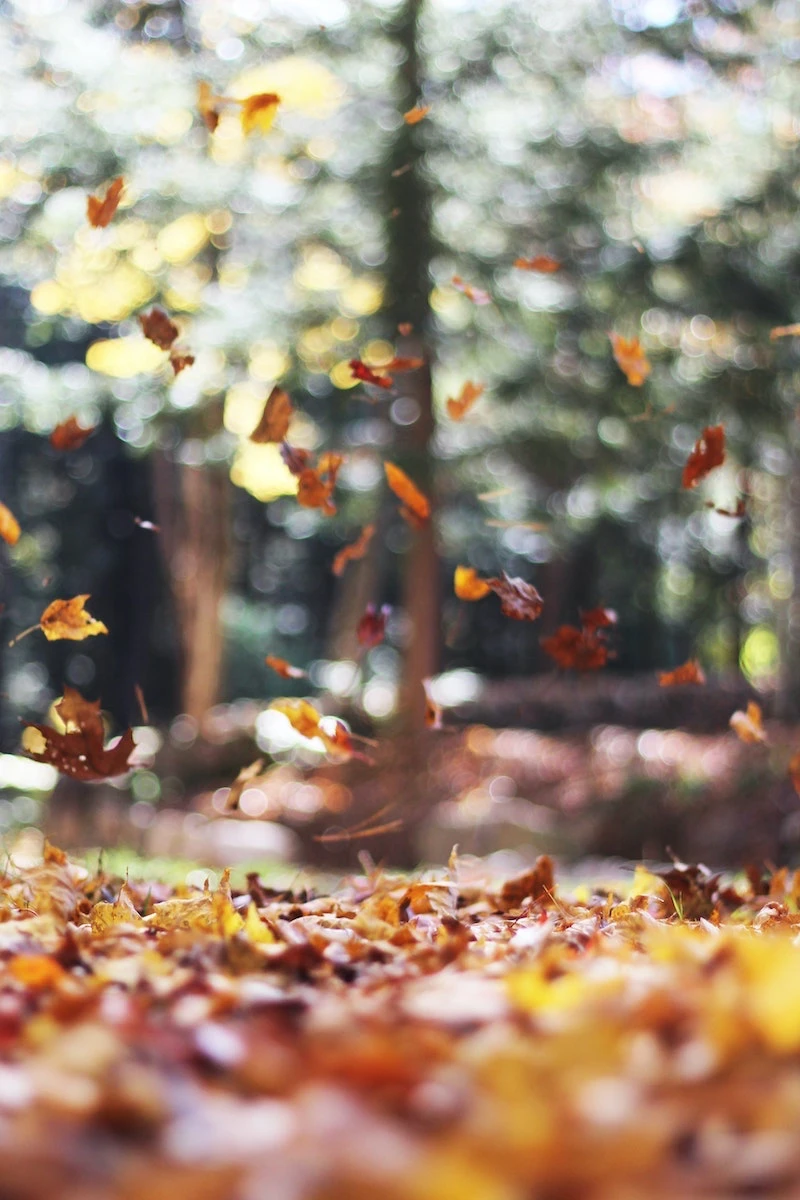
The technique is simple. Rake your big pile onto the tarp. If you have a friend, you can each grab two corners and carry it like a stretcher. If you’re working solo, use the “burrito roll” method. Fold one long side over the leaves, then the other, containing them. Then, you can just grab the corners at one end and drag the whole bundle to your compost pile or curb. It’s so much easier on your back.
Choosing Your Weapon: Rake, Blower, or Mower?
You’ve got a few options for the main event, and each has its place. Knowing when to use which tool is half the battle.
- The Trusty Rake: This is your tool for control and detail work. It’s quiet, great for getting leaves out of garden beds without destroying your plants, and perfect for when leaves are a bit damp. A good “no-clog” rake with a cushioned handle is a fantastic investment and will run you between $25 and $40. It’s a workout, for sure, but sometimes it’s the best tool for the job.
- The Power Blower: When you’re dealing with a huge volume of dry leaves on a big, open lawn, a blower is your best friend. It excels at the “herding” part of the job. A quality cordless battery-powered blower is a game-changer for most homeowners and will cost between $150 and $300. They’re lighter and quieter than gas. But for serious acreage, the pros still rely on the sheer power and runtime of gas backpack blowers. Just remember to wear hearing protection!
- The Secret Weapon Mower: A lot of the time, you don’t need to rake at all. If the leaf layer is light, just mow them. Your mulching mower will shred them into tiny bits that fall into the turf and act as free fertilizer. My rule for this is simple: if you look down and can still see at least half of your grass blades poking up through the leaves, you’re good to mow them in. If it’s a solid brown blanket, you’ve gotta rake or blow them into a pile first.

Not All Leaves Are Created Equal
By the way, it pays to know your leaves. Thin leaves from trees like maple, birch, or cherry break down fast and are perfect for mowing into your lawn. But tough, leathery leaves from oaks or magnolias are a different story. They’re full of tannins and are slow to decompose, so they can mat down and smother your grass. I usually rake those up separately and add them to a long-term compost pile where they can break down over time.
Turn Your Leaves into Black Gold
The biggest mistake people make is bagging up leaves and treating them like trash. That’s a valuable resource you’re sending to the landfill! The best thing you can do is create leaf mold.
It sounds weird, but it’s a gardener’s secret weapon. It’s different from compost; it’s made by a slow, cool fungal process. All you have to do is pile your leaves in a back corner of your yard (a simple wire bin works great to keep it tidy). Shredding them with a lawn mower first speeds things up immensely. Get the pile wet, and then just forget about it for a year or two. You’ll be rewarded with the most amazing, dark, crumbly soil conditioner that your garden beds will absolutely love.
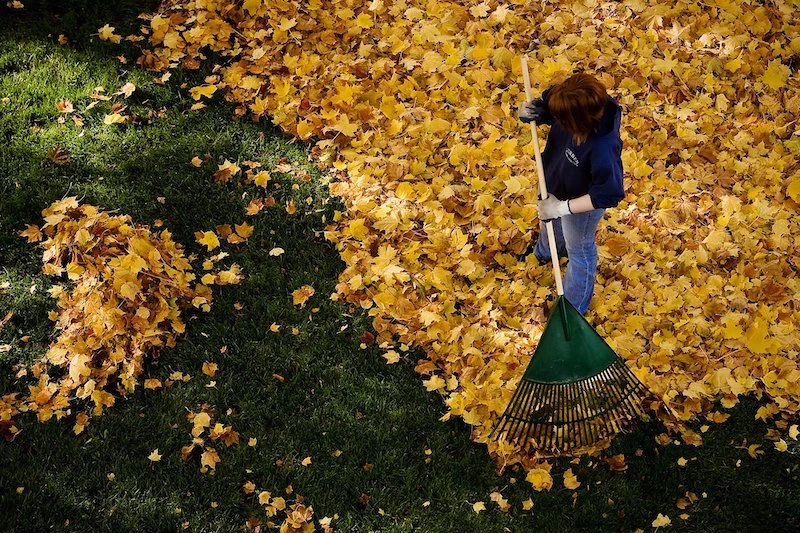
When to Call for Backup
Look, sometimes the job is just too big. If you’re on a property with more than ten large, mature trees or a yard over an acre, the sheer volume of leaves can be overwhelming. To be frank, that’s when it might be time to call a professional landscaping crew. The cost for a full cleanup can range from $300 to $600, depending on your property size. When you weigh that against multiple weekends of back-breaking labor, it can be money well spent.
Safety First, Always
I can’t stress this enough: protect yourself. Working with power equipment and doing repetitive motions has risks. Always wear eye protection—a twig kicked up by a blower can do serious damage. With a gas blower, hearing protection is non-negotiable. And a good pair of gloves isn’t just for comfort; they’ll protect you from blisters and hidden sharp sticks. And please, lift with your legs, not your back, especially when hauling a heavy, wet tarp of leaves.
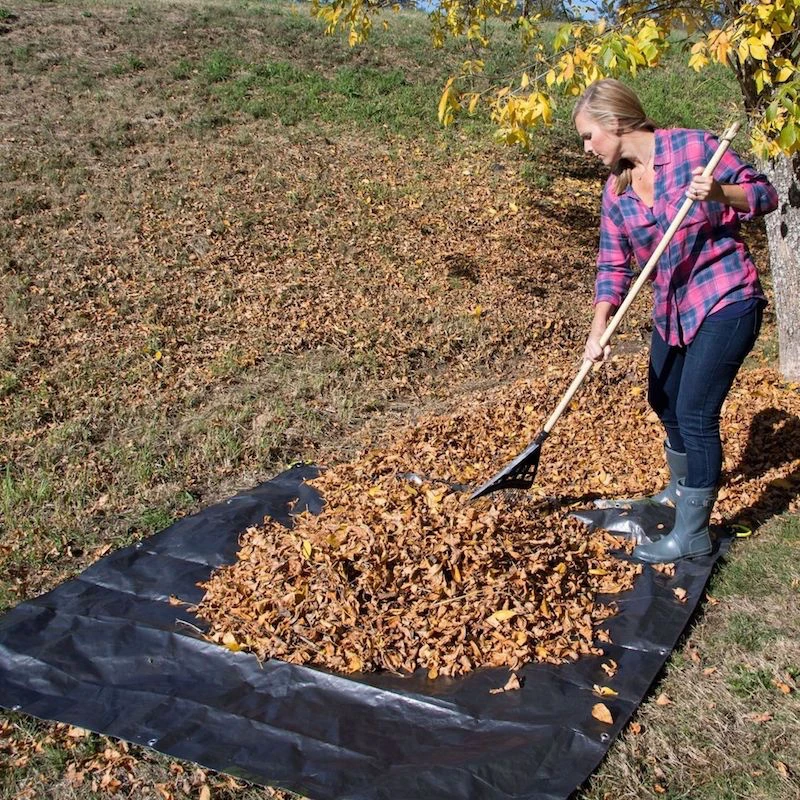
So there you have it. Autumn leaf cleanup doesn’t have to be a dreaded chore. With a bit of patience, the right techniques, and the right tools, you can turn it into a satisfying task that leaves you with a clean yard and a valuable resource for your garden. You’ve got this.
Inspiration:

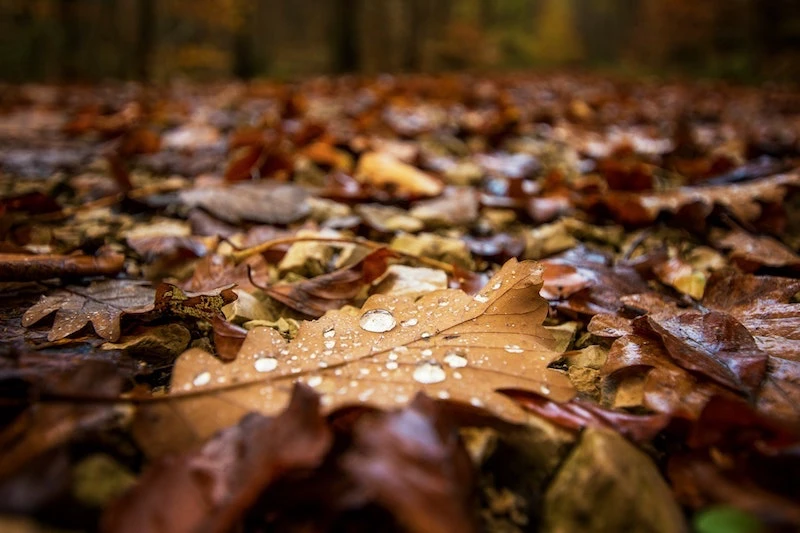
Are all leaf blowers created equal?
Not quite. The choice often comes down to power source and function. For smaller yards and patios, a lightweight cordless electric blower from a brand like EGO or Ryobi is perfect for quickly clearing hard surfaces without the noise and fumes of gas. For larger properties with dense, wet leaves, a gas-powered backpack blower like those from Stihl offers unmatched power. But don’t overlook combination units: a device like the Toro UltraPlus Leaf Blower Vac can also vacuum and mulch the leaves, shredding them into a fine material perfect for your compost pile.

A single mature oak tree can drop between 200,000 and 500,000 leaves in one season.
This staggering number helps explain why a ‘one-and-done’ cleanup is often unrealistic. Instead of seeing it as a single overwhelming task, think of it as a multi-stage process. Pros often do a light ‘grooming’ pass mid-season to keep things tidy, followed by a main cleanup once about 80% of the leaves are down. This prevents overwhelm and keeps the property functional throughout the fall.
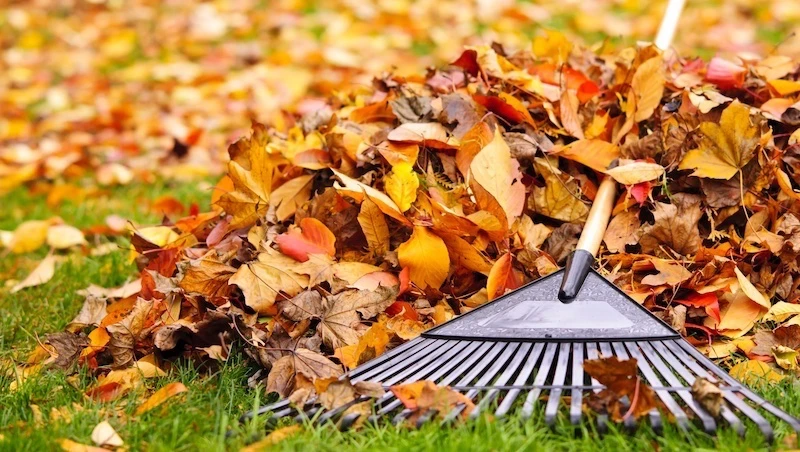
The Golden Ticket: Leaf Mold. Before you bag up all those leaves for collection, consider setting some aside. Leaf mold is the gardener’s secret weapon—a free, nutrient-rich soil conditioner made by simply letting a pile of shredded leaves decompose over a year or two. Unlike compost, it’s low in nutrients but a superstar at improving soil structure and retaining moisture. Just rake them into a simple wire bin in a shady corner and let nature do the work.
Don’t let your tools work against you. Avoid these simple mistakes:
- Using a narrow, stiff garden rake for the lawn. You’ll tire yourself out and risk tearing up the turf. A wide, flexible plastic or bamboo leaf rake is designed to glide over the grass.
- Fighting the wind. It sounds obvious, but always try to rake or blow in the same direction the wind is blowing. Let nature give you a free assist.
- Creating one giant tarp pile. Tarps are great for moving leaves, but overfilling one makes it impossibly heavy. Work in smaller, manageable loads to save your back.










